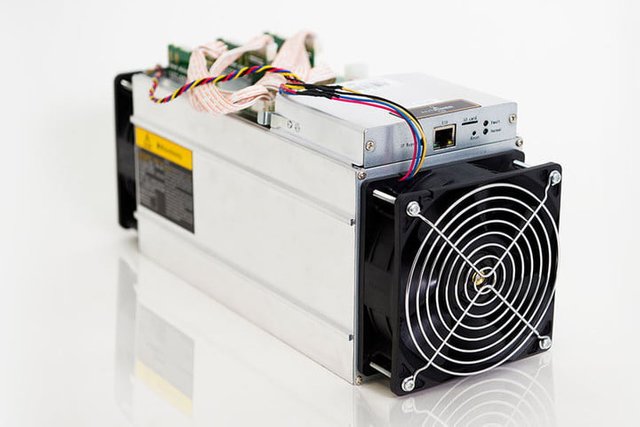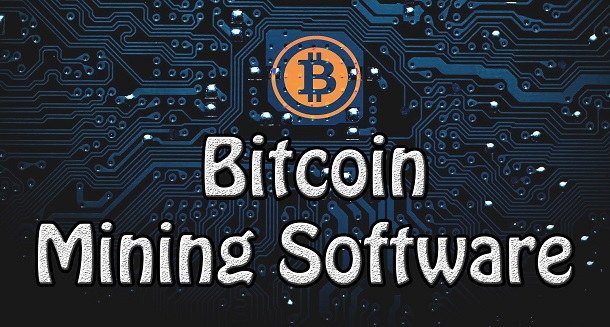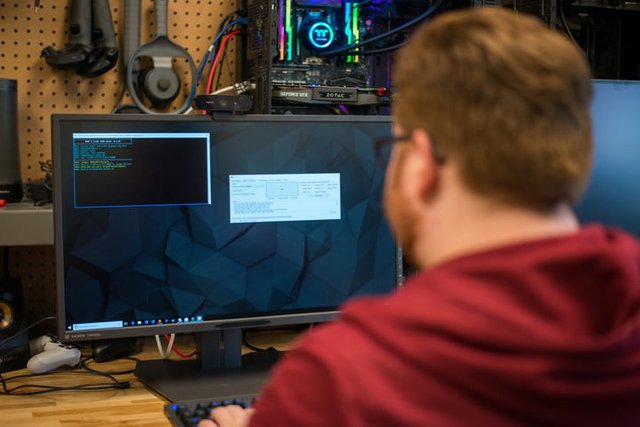How to mine Bitcoin It's not all free money.
- What to know before you try to mine Bitcoin.

When Bitcoin was first introduced in 2009, mining the world’s first and premier cryptocurrency needed little more than a home PC — and not even a fast one at that. Today the barrier for entry is far higher if you want to make any kind of profit doing it. That doesn’t mean it’s impossible, but it’s not the homebrew industry it once was.
Still, if you want to know how to mine Bitcoin, there are a few steps you can take. One involves much more risk and monetary investment than the other, but the potential rewards are greater. So just as when it comes to buying Bitcoin or altcoins, you need to be aware that nothing in the world of cryptocurrencies is guaranteed. Any investment could be lost, so make sure you do your reading before pulling out your credit card.
Mining vs. investment
Before we discuss how to mine Bitcoins yourself, it’s important to note that although there is uncertainty in everything cryptocurrency related, mining is arguably the most volatile. Hardware price fluctuations, changes in Bitcoin difficulty and even the lack of a guarantee of a payout at the end of all your hard work, make it a riskier investment than even buying Bitcoins directly.
Nobody can say whether Bitcoins will be worth more tomorrow than they are today, nor can they give you any concrete answer as to whether you’ll receive a return on your investment, but buying Bitcoin directly at least gives you something for your money immediately. It’s certainly worth considering before you go down the mining route.
METHOD 1: CLOUD MINING

Cloud mining is the practice of renting mining hardware (or a portion of their hashing power) and having someone else do the mining for you. You are typically ‘paid’ for your investment with Bitcoin. Sometimes even if the hardware isn’t used for mining Bitcoin.
Although there are many detractors of cloud mining, it requires a much smaller investment than personal mining. As with general investing, it’s important to do your research, because there are a lot of companies out there which purport to be the best and even the largest have their detractors.
Step 1: Pick your mining company
Genesis Mining is arguably the largest and most reputable of the bunch. HashFlare recently told Digital Trends in an interview that every one of its customers has turned a profit using its service. It did say though, that if many of them had invested in Bitcoin at the right time they may have made more money.
If neither of those companies strikes your fancy, CryptoCompare maintains a list of mining companies with user reviews and ratings, though be aware there are a lot of reviewers looking to shill their referral codes in the comment section.
Step 2: Choose a mining package
Once you have picked a cloud mining provider, you need to pick a mining package. That will typically involve choosing a certain amount of hashing power and cross-referencing that with how much you can afford to pay. Typically paying more will give you a better return, or you’ll turn a profit quicker, but that’s not always the case.
Most cloud mining companies will help you decide by giving you a calculation based on the current market value of Bitcoin, the difficulty of Bitcoin mining and cross-referencing that with the hashing power you’re renting. However, it’s important to note that those numbers can and do change, so it is important to look at market trends and estimate where Bitcoin may be going before choosing your contract. What may be profitable now, may not be if Bitcoin’s value crashes.
Step 3: Pick a mining pool
After choosing your contract, most cloud mining companies will ask you to pick a mining pool. That’s where you choose a global mining team to join. It’s a method of increasing the chance of earning Bitcoin through mining and it’s a standard practice in cloud and personal mining. There are pros and cons of different pools that go beyond the scope of this article, but joining an established and proven pool is likely to be your best bet.
Once you’ve completed that step your cloud mining can begin and within a few days or weeks you should start to see your cloud mining account begin to fill with Bitcoin. Withdrawing it and putting it into a secure wallet of your own is a good plan as soon as you have a small holding, though some cloud miners will allow you to reinvest your earnings for greater hashing power.
Beware of “pre-sale”
Some cloud mining companies will sell you a contract on a “pre-sale” basis. That is effectively asking you to pay upfront for a contract that won’t begin for weeks or months when new hardware becomes available. In most circumstances, it is not advisable because there is no way to guarantee those contracts will be profitable when they start and not even a concrete indication of when that will happen.
METHOD 2: PERSONAL MINING

Personal mining for Bitcoin is rare today because of the high cost involved. Although you can mine alternative cryptocurrencies with consumer hardware, mining Bitcoins in 2018 requires specialized hardware built using application specific integrated circuit (ASIC) chips designed specifically for mining. They are not cheap to buy or run.
Because of the high costs involved, mining Bitcoin yourself is only recommendable if you have ready access to plentiful and more importantly, cheap, electricity and a powerful network connection. Before investing in any hardware or mining set ups, it is imperative you use a Bitcoin mining calculator to see if you can actually turn a profit with all costs considered.
Step 1: Choose your hardware
If you are dead set on mining, you need to buy yourself a powerful ASIC miner. Most of the modern options are built using the same chips, but they all use different power supplies and some are more efficient than others. The most praised at the time of writing is Bitmain’s AntMiner S9, which is currently priced at $2,320, but new orders aren’t slated to ship out for a few weeks. Other, more immediate sellers charge a huge markup and are unlikely to be cost-efficient.
Second-hand hardware is also an option, but bear in mind that mining hardware can burn out very quickly, so there is no guarantee that your newly acquired bargain will last long enough to turn a profit for you. You can also opt for older hardware or the GPU you have on your gaming rig, but again, there’s no guarantee how long it will last and as Bitcoin mining difficulty increases, they may no longer be able to work fast enough to earn Bitcoin for you.
Step 2: Choose a mining pool
Once you have your hardware and it’s setup, ready to go, you need to decide whether you want to mine Bitcoin alone or as part of a pool of collective miners. Doing it by yourself could mean greater rewards (mining rewards are 12.5 Bitcoin at the current difficulty level) but if you get unlucky or don’t have much hashing power, you could mine for months or even years without earning a single Bitcoin. Being part of a pool means more regular, smaller rewards based on how much you contribute. You’ll also have to pay a fee of your earnings to be a part of the collective.
Choosing a mining pool goes beyond the scope of this article, but suffice to say there are guides to the best ones out there. In a nutshell, joining an established, low-fee pool is likely to be your best bet, but you may have specific needs which only some will cater to.
Step 3: Download the right software
The final steps to starting to mine Bitcoins involve downloading the right software and linking up your hardware with a secure wallet. There are bunch of different options, but they all essentially the same thing. The actual setup process of your chosen hardware and software will be dependent on your choices thus far, but if you’ve done everything correctly, you should be ready to mine. Connect your miner up to your PC, login to your pool, start the software and you’re mining.
Step 4: Check the numbers
From here, the most important thing you can do is stay abreast of the numbers involved. As Bitcoin difficulty goes up, you need to make sure your set up is staying profitable. Are you earning enough Bitcoins to cover your electricity costs? Are your Bitcoin miner’s temperatures staying low enough that they aren’t going to burn out? Is your system staying quiet enough to not annoy your neighbors?
If you answered yes to all of those, then sit back and watch your Bitcoins pile up. Or sell them. Or convert them into something else. It’s totally up to you.
Hi, Nice to meet you and Upvoted you :) !
:
倘若你想达成目标,便得在心中描绘出目标达成后的景象;那么,梦想必会成真。——英国当代动机大师 理查丹尼
Thanks You @ustd
Chic article. I learned a lot of interesting and cognitive. I'm screwed up with you, I'll be glad to reciprocal subscription))